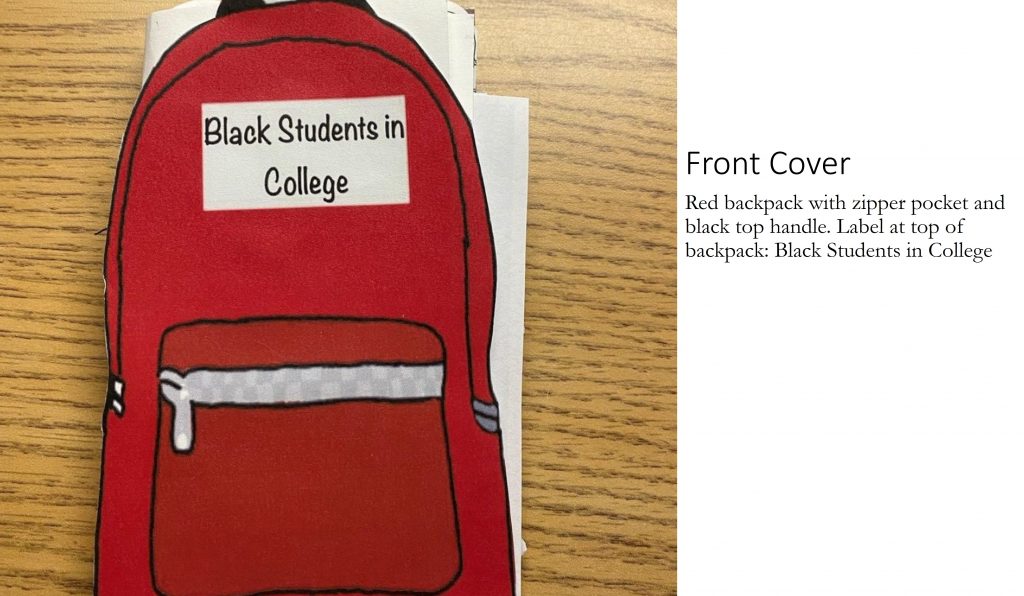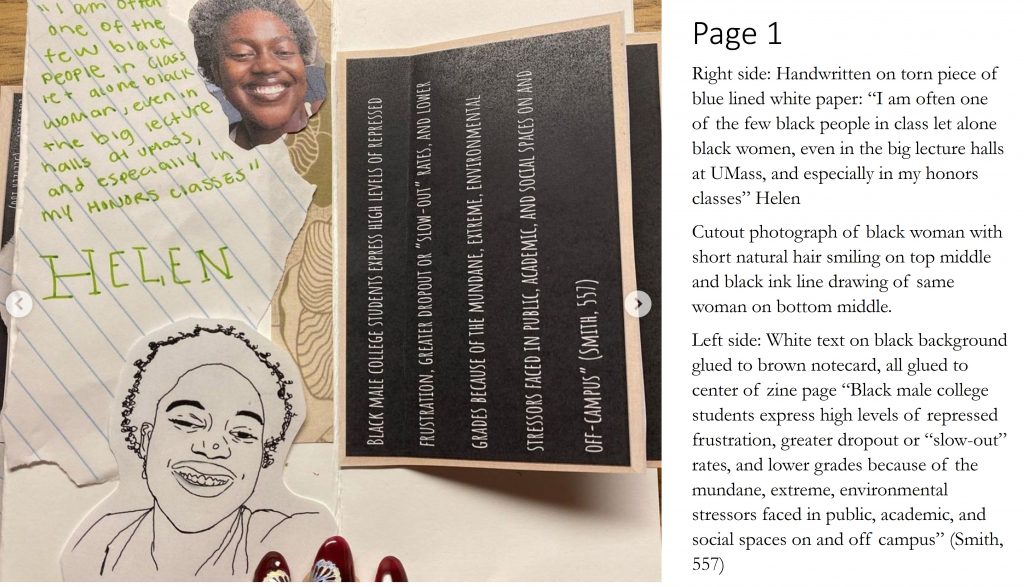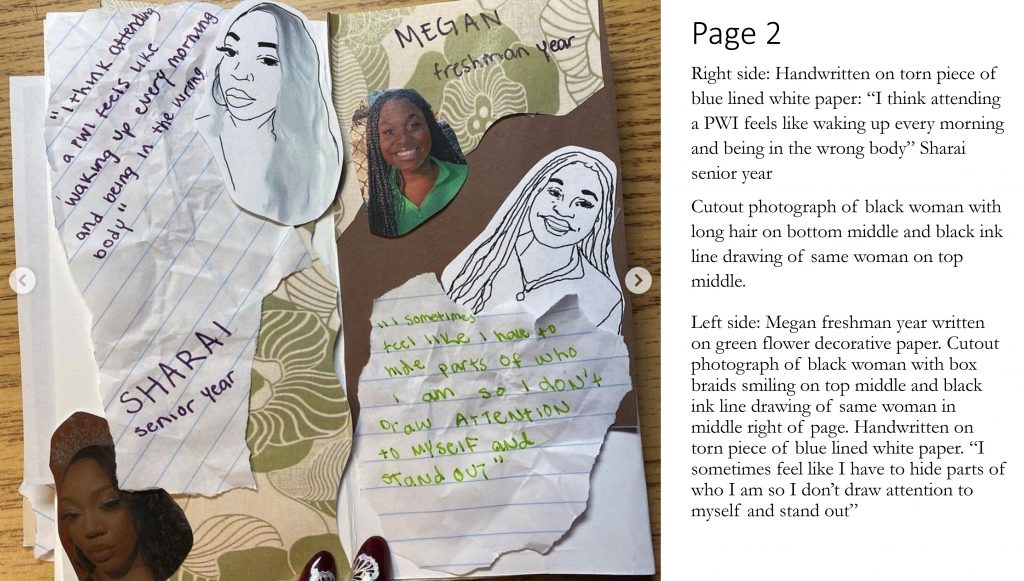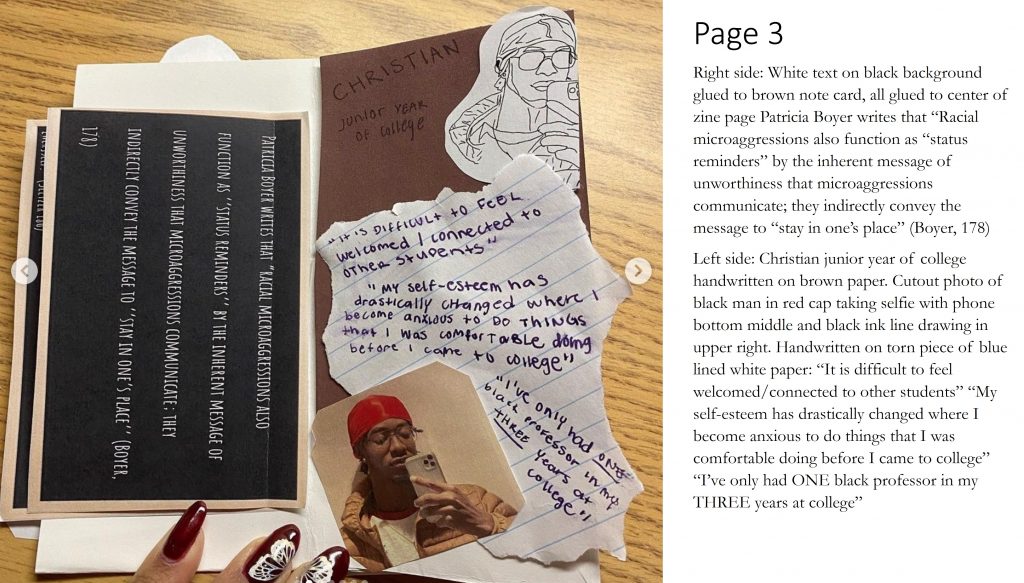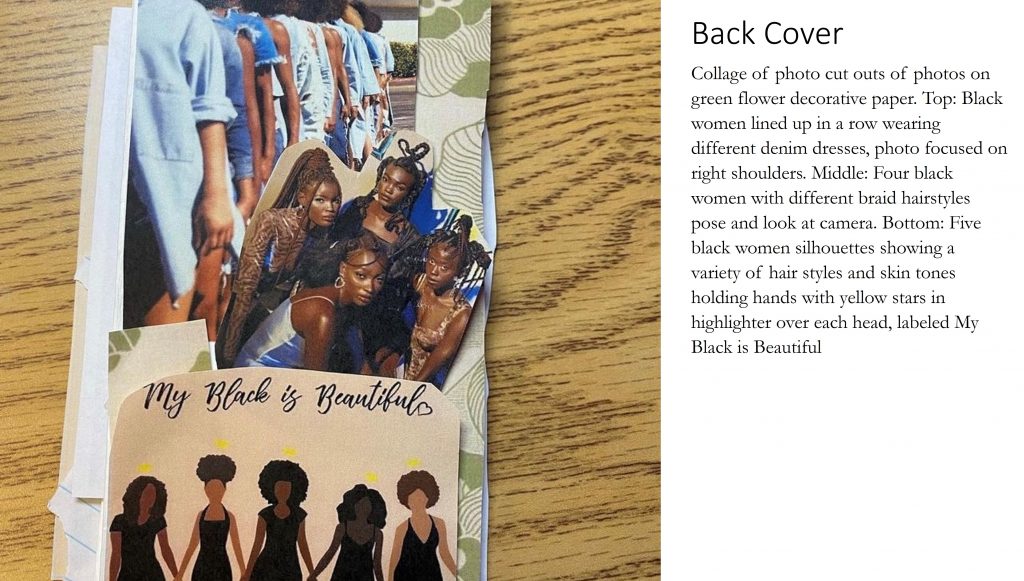30 Black Students in College
Jada Andrade
Click to listen to this essay
In this ‘zine Andrade demonstrates how to circulate a message using physical multimodal composing strategies. Using interview quotations, images, and the layered structure of a physical zine she is able to share and highlight experiences of black students at UMass Amherst in connection with other secondary research sources as well. By combining formal academic citation with personal drawings, words, and images – the final product is a strong example of how something physically multimodal can be just as interesting as something created through digital multimodal composition.
Jada Andrade
Instructor
ENGLWRIT 112: College Writing
Day Month Year
Black Students in College
The images of this ‘zine are provided below with a descriptive transcript for provided above each image.
